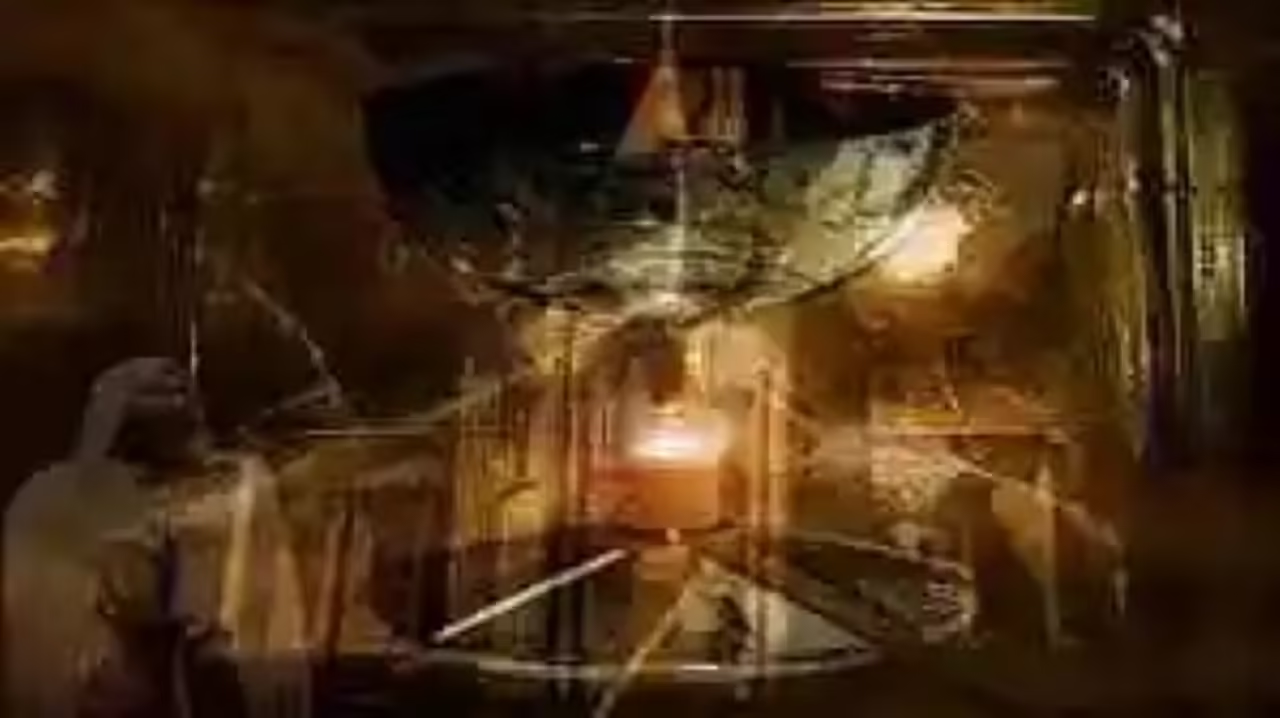
They say that whoever drinks from this chalice will obtain eternal life: the Holy Grail, the mythical cup in which Jesus drank the wine at the Last Supper and in which his own blood was also kept during the crucifixion. This is one of the most sought after relics in history and there are numerous versions about its origin and current location. What they do agree on is that it possesses an unimaginable power; hence characters like Adolf Hitler have devoted years to try to find it, to dominate the world.
Millenary origins
The origin of the Holy Grail is lost in the mists of time. The ancient tradition of the primitive Christians tells us that when Abraham, the patriarch of the three great monotheistic religions: Judaism, Christianity and Islam, returned from the war against Sodom and Gomorrah, it was given to him directly from the hands of the great priest Melchizedek.
Centuries later, this chalice or artifact of great power, would be taken to the temple of Jerusalem by the Queen of Sheba, who gave it to King Solomon, a well-known hierarch who developed and practiced magical knowledge for his own benefit and that of those close to him. Finally, this precious jewel was in the hands of Jesus Christ, who drank wine from it during the last supper.
Joseph of Arimathea, another of Jesus’ disciples
Joseph of Arimathea, one of the members of the Sanhedrin or council of elders of the Jewish people, collected the blood and water that flowed from the wounds of Jesus during the crucifixion to which he was subjected by orders of Pontius Pilate and hid the chalice along with other relics such as the Holy Shroud and the Lance of Longinus, which was used by a Roman soldier to pierce the heart of Jesus Christ. It is said that after a true odyssey by Joseph of Arimathea to escape from the Roman authorities, who also knew of the existence of the magical element, the sacred chalice was hidden in a secret temple in what is now Spain.
The power and glory of the Grail
During the Middle Ages, the famous Knights Templar searched for various relics, but they had a special interest in finding the Grail, because of the legend that claims that by drinking its contents one would achieve immortality. This millenary quest has been captured in countless artistic manifestations such as opera, films and literary narrations. One of the most important is “Wagner’s Parsifal” and the movie “Indiana Jones” by Steven Spielberg.
There are many charlatans around the world who have claimed to have found it, but this is false, as its true whereabouts remain a mystery. The Da Vinci Code is a book that popularized several theories about it, but experts believe that it is still just the imagination of its author Dan Brown, who claims that the Holy Grail is in fact the womb of Mary Magdalene, who supposedly was the wife of Jesus and gave offspring.
It has been the subject of theories, hearsay and has been given much importance since time immemorial. She is associated with divinity and eternal life, as well as power and glory. It is also associated with the story of King Arthur and the Knights of the Round Table, among others.
In the Christian tradition, the Holy Grail became a symbol of spiritual purity and a representation of eternal life. It is said that whoever finds the Holy Grail and drinks its contents will obtain immortality and a divine vision.
Over the centuries, many knights and adventurers have undertaken the quest for the Holy Grail, but to this day, its exact location remains a mystery. There are many legends and myths surrounding the quest for the Holy Grail, including stories of wandering knights, guardian monks and magical creatures protecting the sacred object.
In literature, the Holy Grail has been the subject of much fascination and has been portrayed in many works, including the epic poem “The Song of Mio Cid” and the Arthurian novel “Parzival” by Wolfram von Eschenbach. It is also a recurring theme in comic books and adventure films, where it is portrayed as a magical object that grants powers and triggers epic events.
In addition to its presence in popular culture, the Holy Grail has also been the subject of debate and speculation within the academic community. There are theories that suggest that the Holy Grail could be a metaphor to describe a heightened state of consciousness or a spiritual path to enlightenment. Others argue that it could be a real object that has been hidden or lost over time.
In the Middle Ages, the quest for the Holy Grail became a popular undertaking for knights, who saw it as a way to demonstrate their faith and bravery. Many of these knights believed that an encounter with the Holy Grail would enable them to attain a state of spiritual perfection and ascend to a high position in the heavenly realm.
Although many searches for the Holy Grail were conducted, none were conclusive. Some believe that the actual object was destroyed or lost over time, while others argue that it never existed in a literal sense. Nevertheless, the idea and myth of the Holy Grail continues to inspire people around the world, and the search for the sacred object remains a popular theme in popular culture.
The Holy Grail has been the subject of many interpretations and reinterpretations over the centuries. Many of these interpretations have been influenced by the dominant culture and religion at a given time, and have evolved as cultural and spiritual perspectives changed.
For example, during the Middle Ages, the Holy Grail was seen as a sacred Christian object, while in late medieval Arthurian literature, it was presented as an object of magical power. In modern times, the Holy Grail has been reinterpreted as a symbol of personal and spiritual quest, and has been linked to New Age spirituality and esoteric traditions.
It is important to note that regardless of the interpretation or reinterpretation given to the Holy Grail over the centuries, its impact on popular culture and its ability to inspire the spiritual quest has been constant.
In popular culture, the Holy Grail has been depicted in many different forms, from movies to books to video games. In these works of art, the Holy Grail is often presented as an object of power and mystery that must be found and protected. Many times, the quest for the Holy Grail is portrayed as an epic adventure full of challenges and dangers, testing the characters’ determination and courage.
However, it is also important to note that often these popular representations of the Holy Grail have been simplified and romanticized, and have been influenced by the dominant culture and values of the time. Therefore, it is important to keep in mind that the representation of the Holy Grail in popular culture does not always reflect its true nature or meaning.
Furthermore, although the Holy Grail has been the subject of much fascination and speculation, it is important to remember that its true nature and meaning remain a mystery. The search for truth and deeper understanding are complex and ongoing undertakings, and the complete truth about the Holy Grail may never be known.
Wagner’s Parsifal
The legend of the Holy Grail in Richard Wagner’s Parsifal is a unique and profound interpretation of this ancient story. In this version, the Holy Grail is seen as a sacred object representing spiritual purity and divine knowledge.
In Parsifal, the protagonist, Parsifal, is a young man who embarks on a quest to find the Holy Grail and restore the integrity of the Order of the Grail, which has been corrupted by spiritual impurity. Throughout his quest, Parsifal is guided by a series of mysterious characters and finds the wisdom and understanding he needs to complete his mission.
Importantly, in this version of the Holy Grail legend, the spiritual quest is a central theme and is presented as a path to enlightenment and deep understanding. In addition, Wagner’s Parsifal also highlights the importance of compassion and mercy in the spiritual quest, and suggests that true spiritual purity is the result of a combination of divine knowledge and compassion for others.
Wagner’s Parsifal is considered a highly elaborate and complex work of art, combining music, poetry and drama in a unique and powerful way. Wagner’s music is known for its emotional intensity and its ability to convey a great deal of meaning and depth through melody and rhythm.
In Parsifal, this combination of music, poetry and theater is used to create a unique spiritual and artistic experience that reflects the complexity and deep meaning of the legend of the Holy Grail. In addition, the play also incorporates elements of mythology and philosophy, making it a work that is both artistic and philosophical.
The legend that drinking from the Holy Grail grants immortality is a recurring theme in mythology and Arthurian tradition. According to this legend, the Holy Grail is a sacred object containing a magical liquid that grants immortality and the cure of any disease to those who drink it.
This legend is a reflection of the human quest for immortality and healing from disease. Many ancient cultures believed in the existence of a source of water or a magical drink that granted immortality, and this belief was passed down through history until the Arthurian legend.
However, it is important to note that the legend of the Holy Grail and the idea that drinking from it grants immortality are symbolic and should not be taken literally. In reality, this legend is a metaphor for spiritual quest and inner transformation, and suggests that true immortality is found in spiritual growth and deep understanding.







